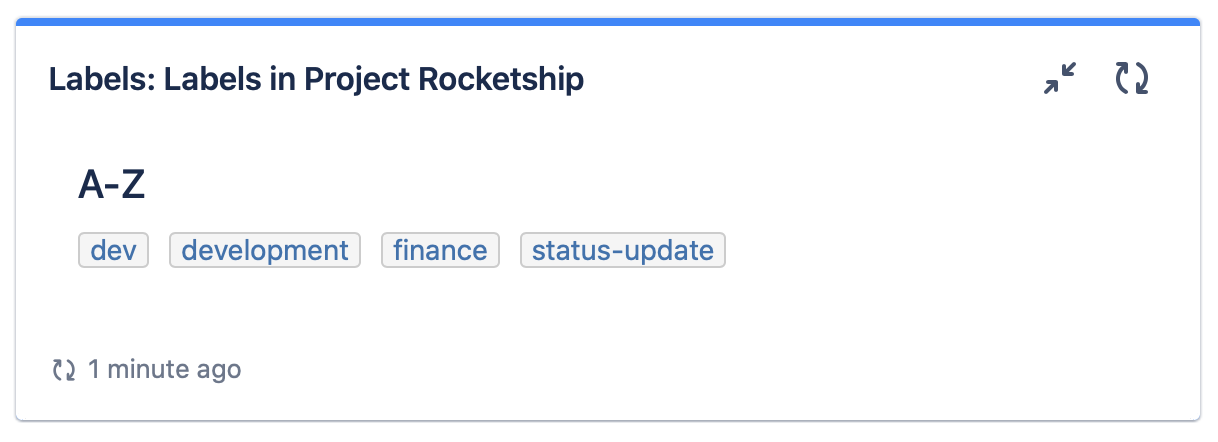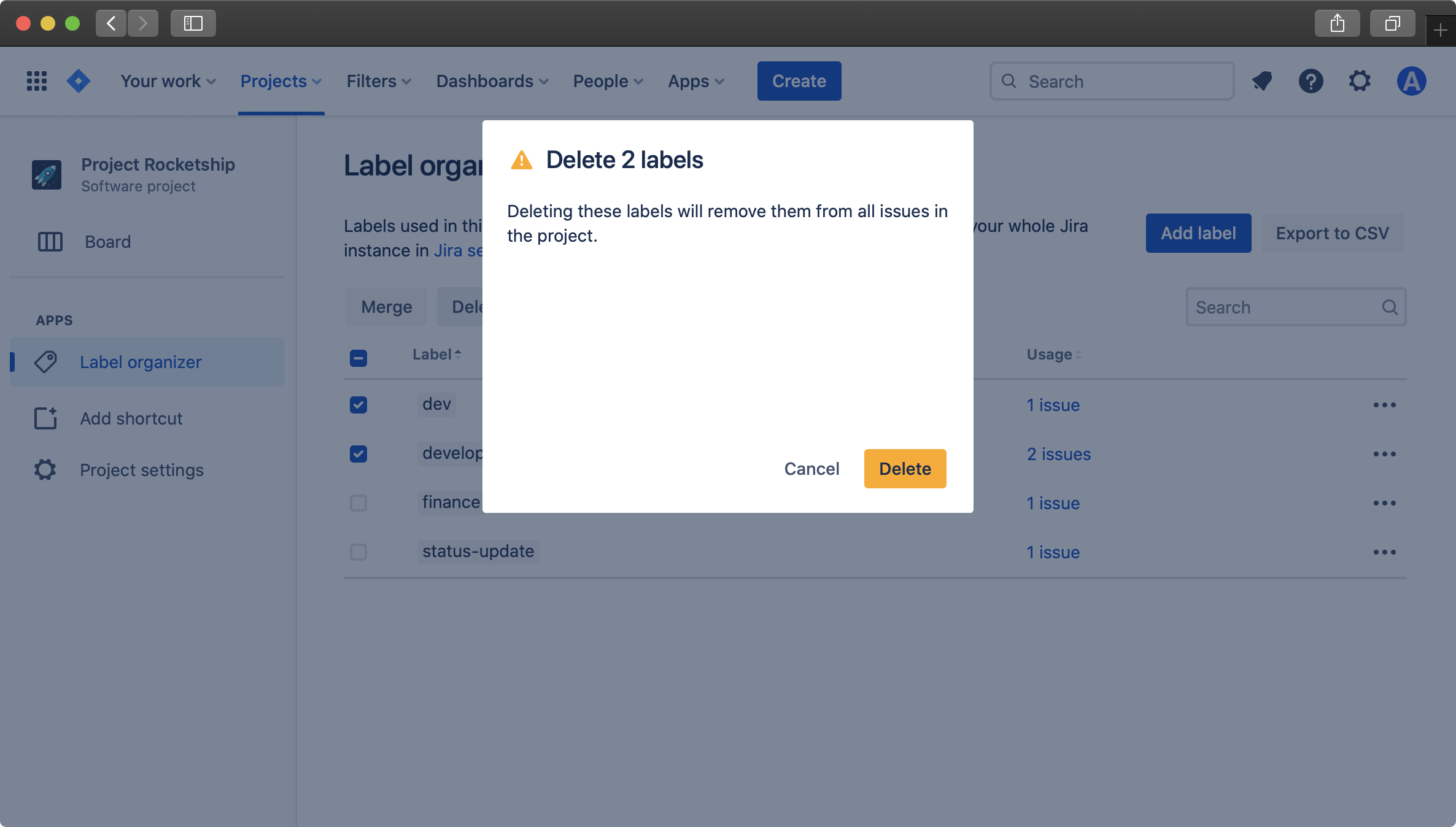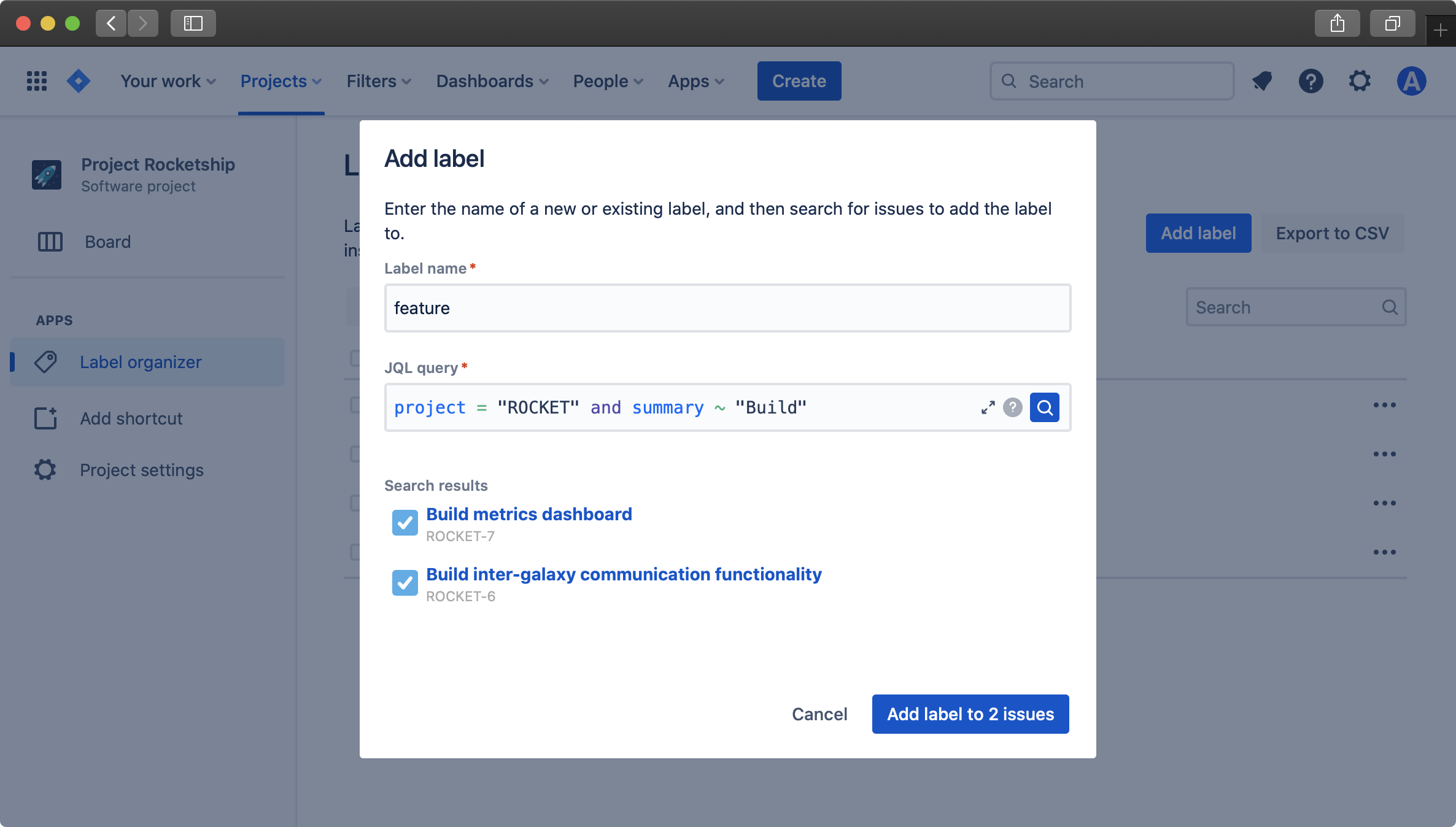
Using labels in Jira Cloud
May 26, 2023Labels are a powerful tool to organize issues in Jira Cloud. They are tags that help to group issues which can exist in one or more Jira projects. For example, labels can be used to categorize issues by topic, project, or priority. This makes it easy for your team find relevant content and see how different of content relates to each other.
Adding labels to an issue
When viewing an existing issue
To add a label when viewing a issue, click on the area to the right of the "Labels" section of the issue sidebar.
Then, start typing the name of an existing or new label. You can either choose an existing label, or click the dropdown item with "(New label)" to create a new label with the text that you've entered.

Keep in mind that label names must be less than 255 characters in length and cannot contain spaces or special characters (such as :, ? and @).
When creating a new issue
To add a label when creating a new issue, click on the area to the right of the "Labels" section of the issue create modal.

Label naming tips
When using labels to organize issues, here are some tips to keep in mind to ensure that your organization has the best experience:
Keep them consistent
Ensure that users in your organization use a consistent naming scheme, which will prevent duplicate labels from being added and ensure that content is easy find.
For example, a user might add a new dev label when a development label already exists, which results in unnecessary duplication of the label. Since labels cannot be constrained to a list of allowed labels, a tool like Label Organizer for Jira Cloud can help you merge multiple labels into a single label.
Your organization could agree on a naming scheme that governs how labels will be named. An example of conventions that might appear in the naming scheme could be:
- Use full words instead of abbreviations
- Use dashes instead of underscores when multiple words appear in the label
Regular auditing of labels to ensure they follow the naming scheme can help to ensure they are always up to date. A tool like Label Organizer for Jira Cloud can help with this.
Use labels only when needed
It's easy to add many different labels to issues, but we recommend limiting the labels added to a concise list of labels that are directly associated with the content.
Ensure labels are removed when no longer needed
To ensure that labels remain relevant to their content, ensure that they are removed if they aren't relevant. For example, if your organization has an "ready-for-testing" label for issues that are ready to be tested, label ensure that it's then removed from that issue once the test has been completed.
Browsing issues with a given label
To view all other content with a label, simply open an issue with that label and then click on the label. This will take you to a search query that lists other issues what that label.

The page will use either basic search or advanced search, depending on the view that you used last.
Alternatively, you can also search for issues that have a specific label by going directly to search and searching for the label there.
Viewing all labels
To view all labels in a project, you can use the Labels Gadget in a dashboard.

Viewing all labels in all projects is not currently supported by default in Jira. However, an app like Label Organizer for Jira Cloud supports this functionality.
Removing Labels
To remove a label from an issue, click on the area to the right of the "Labels" section of the issue sidebar and then click the button next to the label to be removed.

Deleting a label
Labels can be deleted by removing the label from all issues that the label appears on.
This can be done manually in the user interface, or can be done in bulk by using the Jira API or a third-party app like Label Organizer for Jira Cloud.
Bulk adding, removing and merging labels
Performing bulk changes to labels isn't supported natively in the Jira Cloud user interface, but Label Organizer for Jira Cloud supports organizing labels directly inside Jira.


It includes the ability to list all labels in a given Jira project, or entire Jira instance, where labels can then be renamed, merged or deleted:


Furthermore, labels can be added in bulk to pages and blog posts that match a JQL query:

More information and pricing details can be found in the Atlassian Marketplace (free for Jira instances with 10 users or less!).
Conclusion
Creating and editing labels in Jira is a simple and straightforward process that can help you organize and categorize your issues. By keeping in mind the best practices mentioned above, you can ensure that your labels are being used effectively, making it easier to find and access the issues you need. Whilst the features included in Jira allow you to create and edit labels, apps such as Label Organizer for Jira Cloud can help to improve the management of a large number of labels and help your organization have a better experience.

